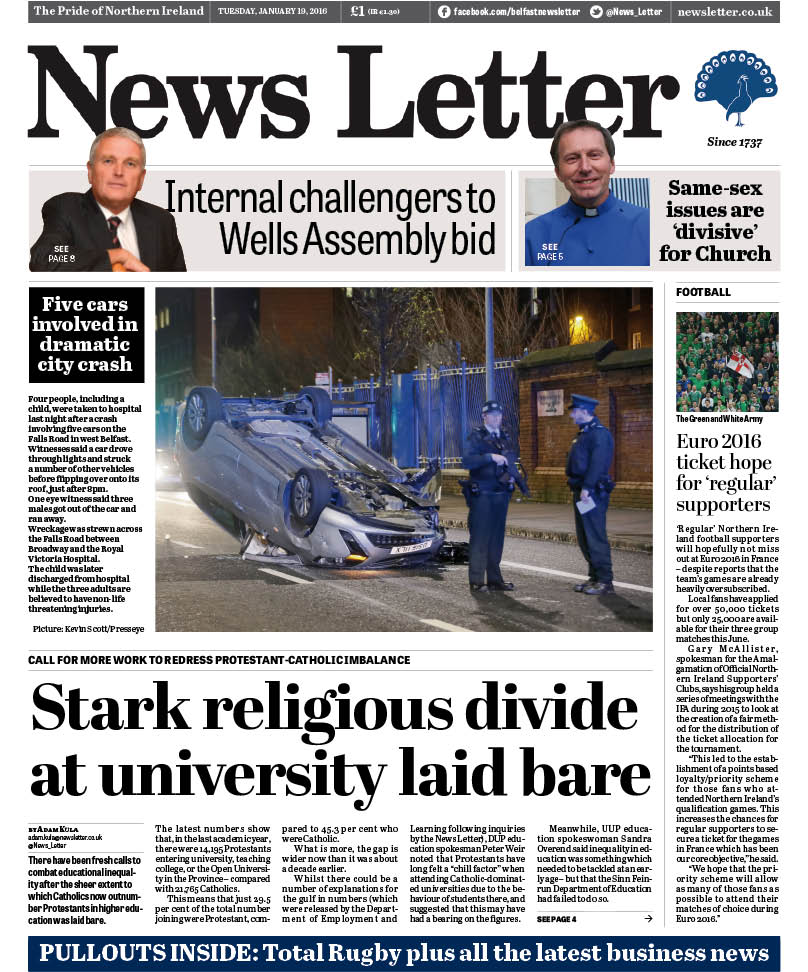The Labour Force Survey for 2014 has been published. The LFS gives us an annual demographic breakdown of the Working Age Population and general population from the age of 16. Although results can be erratic due to variances in the samples taken, the trends can be used to determine future voting patterns given the strong correlation between religion and political affiliation.
Working Age Population
"The difference between the proportion of Protestants and Catholics in the working age population has fallen from 13 percentage points in 1990 to one percentage point in 2014. In 1990 the religious composition of the population of working age was 54% Protestant, 41% Catholic & 6% other/non determined. In 2014 the corresponding figures were 44%, 43% and 13%."
"Over this period, the number of Protestants of working age increased by 3% (from 495,000 to 511,000), the number of working age Catholics increased by 35% (from 375,000 to 504,000), and the number of those classified as 'other/non-determined' almost trebled (from 53,000 to 149,000)".
The definition of "working age" was changed in 2010. Therefore this seems a good starting point to look at the more recent trend.
Population Aged 16+
"The proportion of Protestants has fallen by nine percentage points between 1990 and 2014, from 56% to 47%, while the proportion of Catholics has increased by three percentage points from 38% to 41%, over this same period. The proportion of the population classified as 'other/non-determined' has doubled (from 6% to 12%) over this period".
"Between 1990 and 2014 the number of Protestants aged 16 and over increased by 35,000, or 5%, to 678,000, while the number of Catholics increased by 150,000, or 34%, to 590,000 over the same period. The number of people aged 16 and over classified as 'other/non-determined' has almost trebled from 63,000 to 170,000 over this period".
The more recent trend can be seen in the graph below
Population Aged 16-24
The proportion of Protestants has decreased between 1990 and 2014 (from 49% to 42%), while the proportion of Catholics increased (from 44% to 45%), and the proportion classified as 'other'/non-determined' has almost doubled form 7% to 13%, over the same period.
"Between 1990 and 2014, the number of Protestants in this age group has decreased by 25,000 (22%) to 91,000. The number of Catholics has also decreased over the period, albeit to a lesser extent, from 105,000 to 96,000 (9%). These decreases have been somewhat offset by an increase among those classified as 'other/non-determined' from 16,000 in 1990 to 28,000 in 2014."
Population Aged 60+
"The composition of the population aged 60+ between 1990 and 2014 who identified as Protestant has decreased from 66% in 1990 to 59% in 2014, while the proportion of Catholics has increased from 30% to 33% over the same period. Five percent of those aged 60 and over were classified as 'other/not-determined' in 1990; by 2014 this proportion had increased to 8%".
"There were 166,000 Protestants aged 60 and over in 1990 and this has increased to 216,000 by 2014. The number of Catholics in this age group has increased from 76,000 to 122,000 over the same period. The 11,000 who were aged 60 and over classified as 'other/non-determined' in 1990 had almost trebled to 30,000 by 2014".
Conclusion
Among the Working Age Population the gap between the two main religious blocks stands at only 7,000 or 1 percentage point in 2014.
Among those aged 16 and over the gap between the two communities is 88,000 or 6 percentage points.
Are these trends likely to continue? The answer lies in the two population cohorts aged 16-24 and over 60.
Among the 16-24 year old's there is a majority of 5,000 more Catholics or 3 percentage points.
Among those aged 60 and over, in 2014 there were 94,000 more Protestants a gap of 26%.
So with more Catholics entering the workforce and more Protestants reaching retirement age we can expect to see parity in the 2015 or 2016 Labour Force Survey. It is also evident that the general demographic trends will continue at pace.







































